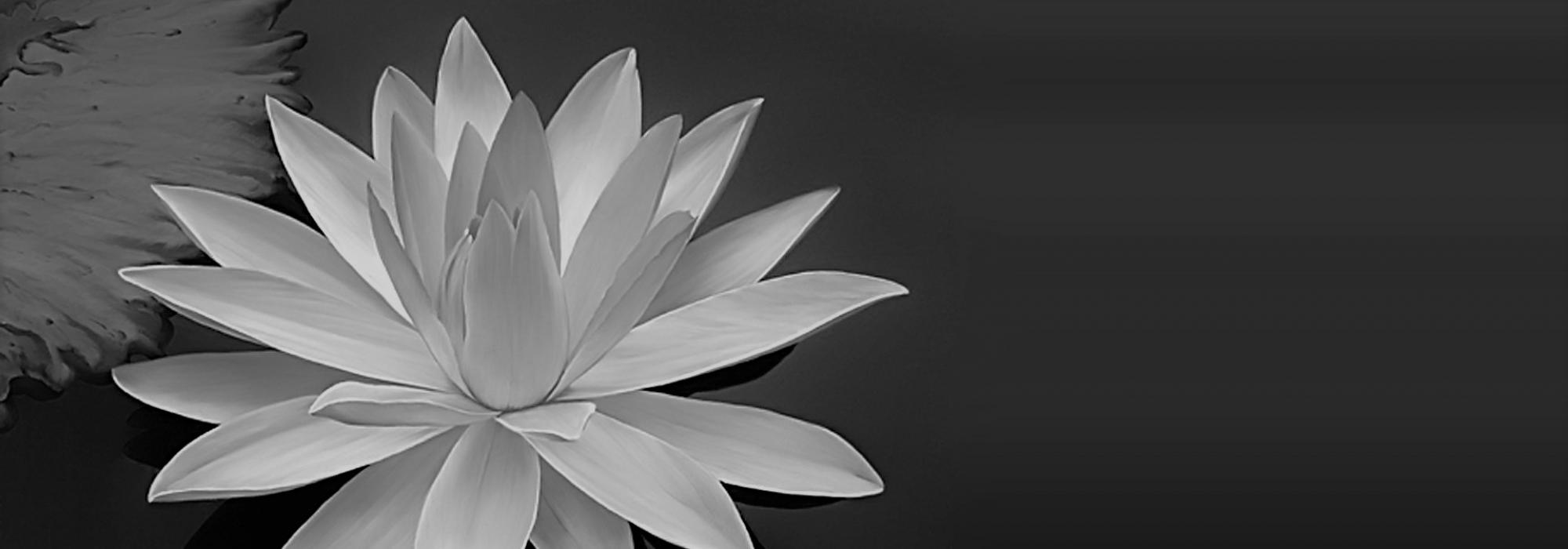ಈತನ “ಬಾಲರಾಮಾಯಣ”ದ ಪ್ರಸ್ತಾವನೆಯಲ್ಲಿ ಭಾಷಾಸಾಮರಸ್ಯವನ್ನು ಮತ್ತೂ ಪ್ರಸ್ಫುಟವಾಗಿ ಕಾಣಬಹುದು:
ಗಿರಃ ಶ್ರವ್ಯಾ ದಿವ್ಯಾಃ ಪ್ರಕೃತಿಮಧುರಾಃ ಪ್ರಾಕೃತಧುರಾಃ
ಸುಭವ್ಯೋऽಪಭ್ರಂಶಃ ಸರಸರಚನಂ ಭೂತವಚನಮ್ |
ವಿಭಿನ್ನಾಃ ಪಂಥಾನಃ ಕಿಮಪಿ ಕಮನೀಯಾಶ್ಚ ತ ಇಮೇ
ನಿಬದ್ಧಾ ಯಸ್ತ್ವೇಷಾಂ ಸ ಖಲು ನಿಖಿಲೇऽಸ್ಮಿನ್ ಕವಿವೃಷಾ || (೧.೧೧)
ಕಿವಿಗಿಂಪಾದ ದೇವವಾಣಿ ಸಂಸ್ಕೃತ, ನಿಸರ್ಗಮಾಧುರ್ಯವುಳ್ಳ ಪ್ರಾಕೃತ, ಭವ್ಯವಾದ ಅಪಭ್ರಂಶ, ರಸಮಯವಾದ ಪೈಶಾಚಿಯೇ ಮೊದಲಾದ ಬಗೆಬಗೆಯ ಚೆಲುವಿನ ಭಾಷಾಮಾರ್ಗಗಳಿವೆ. ಇವೆಲ್ಲವುಗಳಲ್ಲಿ ಸೊಗಸಾಗಿ ಸಾಹಿತ್ಯವನ್ನು ಸೃಜಿಸಬಲ್ಲ ಕವಿವರ್ಯನಿವನು.
ಈ ಮಾತುಗಳಲ್ಲಿ ರಾಜಶೇಖರನು ತನ್ನ ಕವಿರಾಜತ್ವವನ್ನು ಪರ್ಯಾಯವಾಗಿ ಹೇಳಿಕೊಂಡಿದ್ದಾನೆ. ಅವನ ಪ್ರಕಾರ ಎಲ್ಲ ಭಾಷೆಗಳಲ್ಲಿ ಎಲ್ಲ ಬಗೆಯ ಸಾಹಿತ್ಯವನ್ನು ನಿರ್ಮಿಸಬಲ್ಲವನು ಕವಿರಾಜ. ಇಂಥವನಿಗೆ ಭಾಷಾವೈಷಮ್ಯವಿಲ್ಲ. ಮೇಲಣ ಪದ್ಯದಲ್ಲವನು ಪ್ರತಿಯೊಂದು ಭಾಷೆಯ ವೈಶಿಷ್ಟ್ಯವನ್ನೂ ನಿಷ್ಪಕ್ಷಪಾತಿಯಾಗಿ ನಿರೂಪಿಸಿದ್ದಾನೆ. ಈತನ ಪರವರ್ತಿಯಾದ ಕವಿ-ಪಂಡಿತ ಕ್ಷೇಮೇಂದ್ರನು ತನ್ನ “ಕವಿಕಂಠಾಭರಣ”ದಲ್ಲಿ ಸುಕವಿಯೊಬ್ಬನಿಗೆ ಸಕಲಭಾಷೆಗಳ ಪರಿಚಯ ಮತ್ತವುಗಳಲ್ಲಿ ಪ್ರೀತಿ ಇರಬೇಕೆಂದು ಒತ್ತಿಹೇಳಿರುವುದು ಸ್ಮರಣೀಯ.[1]
ಇಂದು ಉಪಲಬ್ಧವಿಲ್ಲದ ಇವನ “ಹರವಿಲಾಸ”ಕಾವ್ಯದ ಶ್ಲೋಕವೊಂದು ಜಲ್ಹಣನ “ಸೂಕ್ತಿಮುಕ್ತಾವಳಿ”ಯಲ್ಲಿ ಸಂಗೃಹೀತವಾಗಿದೆ (೪.೧೨). ಅದನ್ನು ಗಮನಿಸಬಹುದು:
ಕರ್ತವ್ಯಾ ಚಾರ್ಥಸಾರೇऽಪಿ ಕಾವ್ಯೇ ಶಬ್ದವಿಚಿತ್ರತಾ |
ವಿನಾ ಘಂಟಾಘಣತ್ಕಾರಂ ಗಜೋ ಗಚ್ಛನ್ನ ಶೋಭತೇ ||
ಕಾವ್ಯದಲ್ಲಿ ಅರ್ಥಸ್ವಾರಸ್ಯವಿದ್ದರೂ ಶಬ್ದಸೌಂದರ್ಯವನ್ನು ಸಾಧಿಸಲೇಬೇಕು. ಗಂಟೆಯಿಲ್ಲದೆ ಮೆರೆವಣಿಗೆಗೆ ಹೊರಟ ಆನೆ ಶೋಭಿಸುವುದಿಲ್ಲ.
ಶಕ್ತಸುಂದರ ಶರೀರದಲ್ಲಿ ಜ್ಞಾನ-ಶೀಲಗಳುಳ್ಳ ಚೈತನ್ಯದಂತೆ ಶಬ್ದ ಮತ್ತು ಅರ್ಥಗಳ ವಲಯಗಳೆರಡರಲ್ಲಿಯೂ ಸ್ವಾರಸ್ಯವಿರಬೇಕೆಂಬುದು ಎಲ್ಲ ಆಲಂಕಾರಿಕರ ಒಕ್ಕೊರಲಿನ ಮಾತು. ಏಕೆಂದರೆ ಶಬ್ದಕ್ಕಿರುವ ಧ್ವನಿಶಕ್ತಿಯ ಜೊತೆಗೆ ಅದಕ್ಕಿರುವ ವ್ಯಂಜಕಗುಣವೂ ಅಪಾರ. ರಸಧ್ವನಿಯನ್ನು ವಿಶಿಷ್ಟಶಬ್ದಗಳ ಅನಿವಾರ್ಯತೆಯಿಲ್ಲದೆ ಕೂಡ ಸಾಧಿಸಬಹುದು; ಆದರೆ ವ್ಯಂಜಕಸಾಮಗ್ರಿಯನ್ನು ಶಬ್ದದಿಂದಲೇ ಹವಣಿಸಿಕೊಳ್ಳಬೇಕು. ಇದನ್ನು ಮನಗಂಡ ಕವಿಗಳು ಕಾವ್ಯದ ಅರ್ಥನಿಷ್ಠತೆಯನ್ನು ಗೌರವಿಸಿಯೂ ಶಬ್ದಸೌಂದರ್ಯಕ್ಕೆ ಯುಕ್ತಸ್ಥಾನವನ್ನಿತ್ತಿದ್ದಾರೆ.
ಕಾವ್ಯದ ರೂಪ-ಸ್ವರೂಪಗಳ ಸ್ವಾರಸ್ಯವನ್ನು ಶಬ್ದಗತವೆಂದೂ ಅರ್ಥಗತವೆಂದೂ ಉಭಯಗತವೆಂದೂ ಮೂರು ಬಗೆಯಲ್ಲಿ ವಿಂಗಡಿಸಬಹುದು. ಅರ್ಥಗತಸ್ವಾರಸ್ಯವನ್ನು ಭಾಷಾಂತರಗಳಲ್ಲಿಯೂ ಉಳಿಸಿಕೊಳ್ಳಬಹುದು. ಆದರೆ ಶಬ್ದಗತ ಮತ್ತು ಉಭಯಗತ ಸ್ವಾರಸ್ಯಗಳು ಅನುವಾದಗಳಲ್ಲಿ ನಿಲ್ಲಲಾರವು. ಶಬ್ದಗತಸ್ವಾರಸ್ಯವಂತೂ ಆಯಾ ಮಾಧ್ಯಮಕ್ಕೇ ವಿಶಿಷ್ಟವಾದುದೆಂಬುದು ಸರ್ವವೇದ್ಯ. ಜಗತ್ತಿನ ಮಿಕ್ಕ ಭಾಷೆಗಳ ಲೇಖಕರಿಗೆ ಹೋಲಿಸಿದರೆ ಸಂಸ್ಕೃತಕವಿಗಳೂ ಅವರ ಜಾಡಿನಲ್ಲಿ ನಡೆದ ಇನ್ನಿತರ ದೇಶಭಾಷಾಕವಿಗಳೂ ಕಾವ್ಯದ ಶಬ್ದಸೌಂದರ್ಯಕ್ಕೆ ಎಣೆಯಿಲ್ಲದ ಪ್ರಾಶಸ್ತ್ಯವಿತ್ತು ಸರಿಮಿಗಿಲಾದ ಫಲವನ್ನೂ ಪಡೆದಿದ್ದಾರೆ. ಶಬ್ದಗತಸೌಂದರ್ಯವು ವರ್ಣ-ಪದಗಳಿಗೆ ನಿಷ್ಠವಾಗಿ ಗದ್ಯ-ಪದ್ಯಗಳಿಗೆ ನಿರಪೇಕ್ಷವಾಗಿ ತೋರಿಕೊಳ್ಳುವುದು ಒಂದು ಅಂಶವಾದರೆ, ಛಂದೋಗತಿಯ ಮೂಲಕ ಅಭಿವ್ಯಕ್ತವಾಗುವುದು ಮತ್ತೊಂದು ಅಂಶ. ಪ್ರಕೃತ ರಾಜಶೇಖರನು ಇವೆರಡೂ ಬಗೆಯ ಸ್ವಾರಸ್ಯಗಳನ್ನು ಗಮನದಲ್ಲಿರಿಸಿಕೊಂಡಿದ್ದಾನೆ. ಅಭಿಜಾತಕವಿಗಳೆಲ್ಲ ಪ್ರಾಯಿಕವಾಗಿ ಹೀಗೊಂದು ಕಟ್ಟಲೆಯನ್ನು ತಮ್ಮೊಳಗೆ ಮಾಡಿಕೊಂಡಂತೆ ಕಾಣುತ್ತದೆ. ಕಾವ್ಯದಲ್ಲಿ ಅರ್ಥವೈಚಿತ್ರ್ಯ ಬಲುಮಟ್ಟಿಗೆ ಪ್ರತಿಭಾಧೀನ. ಈ ಕಾರಣದಿಂದಲೇ ಇದು ಅನಿಯತ. ಆದರೆ ಶಬ್ದವೈಚಿತ್ರ್ಯದ ಸಂಗತಿ ಹೀಗಲ್ಲ. ಅದು ವ್ಯುತ್ಪತ್ತಿಗೆ ಅಧೀನವಾದ ಕಾರಣ ಮಿಗಿಲಾಗಿ ನಿಯತ. ಆದುದರಿಂದ ಅಭಿಜಾತಕವಿಗಳು ಸರ್ವದಾ ಅರ್ಥಸೌಂದರ್ಯವನ್ನು ತುಂಬಿಕೊಡಲಾಗದಿದ್ದರೆ ಕನಿಷ್ಠಪಕ್ಷ ಶಬ್ದಗತವಾದ ಸೌಂದರ್ಯವನ್ನಾದರೂ ತಮ್ಮ ಕಾವ್ಯಗಳಲ್ಲಿ ತರಬೇಕು. ಇದು ಸಾಹಿತ್ಯದಲ್ಲಿ ಮೇಲ್ನೋಟಕ್ಕಾದರೂ “ಕಾವ್ಯತ್ವ”ವನ್ನು ತರುತ್ತದೆ. ಇಷ್ಟರ ಮಟ್ಟಿನ ಸೌಂದರ್ಯ ಕೂಡ ಸಹೃದಯರನ್ನು ಹಿಡಿದಿಟ್ಟುಕೊಳ್ಳುವಲ್ಲಿ ತಕ್ಕಮಟ್ಟಿಗೆ ಫಲಕಾರಿ. ಹೀಗಾಗಿಯೇ ನಮ್ಮ ಪ್ರಾಚೀನಕವಿಗಳ ರಚನೆಗಳು ತಮ್ಮ ಶ್ರಾವ್ಯಗುಣದಿಂದ ಕಾಲಪ್ರವಾಹದಲ್ಲಿ ಕೊಚ್ಚಿಹೋಗದೆ ನಿಂತಿವೆ. ಈ ಮಟ್ಟದ ಚೆಲುವು ಕೂಡ ಮಹತ್ತಾದ ಕಾವ್ಯವೊಂದು ಹುಟ್ಟಿ ಬರುವವರೆಗೆ ರಸಿಕಸಾಮಾನ್ಯವನ್ನು ಕಾವ್ಯಲೋಕದಿಂದ ವಿಮುಖವಾಗದಂತೆ ಕಾಪಾಡಿಕೊಳ್ಳಲು ಶಕ್ತವಾಗುತ್ತದೆ. ಇದು ಅಲ್ಪ-ಸ್ವಲ್ಪದ ಮಾತಲ್ಲ. ಶಬ್ದಸೌಂದರ್ಯಕ್ಕಿರುವ ಈ ಮಹಾಗುಣವನ್ನು ತಿಳಿದುಕೊಳ್ಳದೆ, ತಿಳಿದುಕೊಂಡರೂ ವ್ಯುತ್ಪತ್ತಿ-ಅಭ್ಯಾಸಗಳ ದುಡಿಮೆಗೆ ತೆತ್ತುಕೊಳ್ಳಲಾಗದೆ ಆಲಸ್ಯ-ಅಹಂಕಾರಗಳಿಂದ ಆಧುನಿಕಕವಿಗಳು ತಮ್ಮ ರಚನೆಗಳ ಸೌಂದರ್ಯಕ್ಕೆ ಸರ್ವಥಾ ಎರವಾಗಿದ್ದಾರೆ. ಇವರಿಗೆ ದೈವಿಕವಾದ ಅರ್ಥಸೌಂದರ್ಯ ನಿಯತವಾಗಿ ದಕ್ಕುವಂತಿಲ್ಲ; ಪುರುಷಕಾರದ ಶಬ್ದಸೌಂದರ್ಯ ಸಾಧಿತವಾಗಿಲ್ಲ. ಒಟ್ಟಿನಲ್ಲಿ ಕಾವ್ಯತ್ವವಿರಲಿ, ಕಾವ್ಯಾಭಾಸತ್ವವೂ ಇವರಿಂದ ದೂರವಾಗಿದೆ. ಇದಿಷ್ಟೇ ಆಗಿದ್ದಲ್ಲಿ ಮೌಲ್ಯಪ್ರಿಯರು ದುಃಖಿಸಬೇಕಿರಲಿಲ್ಲ. ಇಂಥ ಉಭಯದರಿದ್ರರಾದ ಕವಿಬ್ರುವರ ಕೃತಿಗಳನ್ನೇ ಕಾವ್ಯವೆಂದು ಭ್ರಮಿಸಿದ ಸಾಮಾನ್ಯರು ಸಾಹಿತ್ಯಕ್ಕೇ ದೂರವಾಗುತ್ತಿರುವುದು ಹೆಚ್ಚಿನ ಕಳವಳಕ್ಕೆ ಕಾರಣವಾಗಿದೆ. ಇವೆಲ್ಲ ರಾಜಶೇಖರನ ಪದ್ಯದಿಂದ ಸ್ಫುರಿಸಬಹುದಾದ ವಿಚಾರಶಕಲಗಳು.
ಒಟ್ಟಿನಲ್ಲಿ ರಾಜಶೇಖರನ ಉಪಲಬ್ಧಕಾವ್ಯಗಳಿಗಿಂತ ಅವನ ಕಾವ್ಯಮೀಮಾಂಸೆ ಹೇಗೆ ವಿಶಿಷ್ಟವೋ ಅದೇ ರೀತಿ ಅವನ ಕಾವ್ಯಗಳಲ್ಲಿರುವ ಸಾಹಿತ್ಯತತ್ತ್ವವಿವೇಚನೆಗಿಂತ ಕಾವ್ಯಮೀಮಾಂಸಾಗ್ರಂಥದಲ್ಲಿ ಕಾಣುವ ವಿವೇಚನೆಗಳೇ ಮಿಗಿಲಾಗಿ ಮೌಲಿಕ.
ತ್ರಿವಿಕ್ರಮಭಟ್ಟ
ಇಂದು ಲಭ್ಯವಿರುವ ಸಾಲಂಕೃತಚಂಪೂಕಾವ್ಯಗಳ ಪೈಕಿ ತ್ರಿವಿಕ್ರಮಭಟ್ಟನ “ನಲಚಂಪೂ” ಐತಿಹಾಸಿಕವಾಗಿ ಮೊದಲನೆಯದು. ಶ್ಲೇಷಬಾಹುಳ್ಯವಿರುವ ಈ ಕೃತಿಯನ್ನು ಸಹಜವಾಗಿಯೇ ಕವಿ ಹೀಗೆ ಸಮರ್ಥಿಸಿಕೊಳ್ಳುತ್ತಾನೆ:
ವಾಚಃ ಕಾಠಿನ್ಯಮಾಯಾಂತಿ ಭಂಗಶ್ಲೇಷವಿಶೇಷತಃ |
ನೋದ್ವೇಗಸ್ತತ್ರ ಕರ್ತವ್ಯೋ ಯಸ್ಮಾನ್ನೈಕೋ ರಸಃ ಕವಿಃ || (೧.೧೬)
ಕಾವ್ಯದಲ್ಲಿ ಸಭಂಗಶ್ಲೇಷವು ಹೆಚ್ಚಾದ ಕಾಠಿನ್ಯವನ್ನು ಮುಂದೊಡ್ಡುತ್ತದೆ. ಇದಕ್ಕಾಗಿ ಬೇಸರಿಸಬಾರದು. ಏಕೆಂದರೆ ಕವಿಗಳಿಗೆ ಹಲವು ತೆರನಾದ ಅಭಿರುಚಿಗಳಿರುತ್ತವೆ.
ಇಲ್ಲಿ ತ್ರಿವಿಕ್ರಮಭಟ್ಟನು ಕಾವ್ಯರಚನೆಯನ್ನು ಕುರಿತು ಪ್ರತಿಯೊಬ್ಬ ಕವಿಗೂ ಇರುವ ಒಲವು-ನಿಲವುಗಳನ್ನು ಪ್ರಸ್ತಾವಿಸಿದ್ದಾನೆ. ಇದೊಂದು ಮಹತ್ತ್ವದ ಸಂಗತಿ. ನಮ್ಮ ಆಲಂಕಾರಿಕರು ಪ್ರಾಯಿಕವಾಗಿ ಕವಿಮನೋಧರ್ಮವನ್ನು ಗಣಿಸುವುದಿಲ್ಲ. ಅವರು ಸಾಮುದಾಯಿಕವಾದ ಸಾಹಿತ್ಯಸಂಪ್ರದಾಯಗಳನ್ನು ಪ್ರತಿಪಾದಿಸುವ ಭರದಲ್ಲಿ ವೈಯಕ್ತಿಕವಾದ ಕವಿಮನೋಧರ್ಮವನ್ನು ಸಹಜವಾಗಿಯೇ ಅವಗಣಿಸಿದ್ದಾರೆ. ಗುಣ-ರೀತಿ-ಮಾರ್ಗಗಳಂಥ ಚರ್ಚಿಸುವಾಗ ಈ ಧೋರಣೆ ಸ್ಪಷ್ಟವಾಗಿ ತೋರುತ್ತದೆ. ಎಲ್ಲಿಯೋ ಕುಂತಕನಂಥ ಒಬ್ಬಿಬ್ಬರು ಅಪವಾದವೆಂಬಂತೆ ಕವಿಮನೋಧರ್ಮಕ್ಕೆ ಅನುಸಾರವಾಗಿ ಮಾರ್ಗಗಳನ್ನು ನಿರ್ವಚಿಸುತ್ತಾರೆ. ಆದರೆ ಇಲ್ಲಿಯೂ ಅವಧಾರಣೆ ಸಂದಿರುವುದು ಸಾಮುದಾಯಿಕಸಂಪ್ರದಾಯಕ್ಕೇ. ಕ್ಷೇಮೇಂದ್ರನು ತನ್ನ “ಸುವೃತ್ತತಿಲಕ”ದಲ್ಲಿ ವಿವಿಧಕವಿಗಳ ವೃತ್ತಪ್ರೀತಿ ಮತ್ತು ಛಂದೋನಿರ್ವಾಹಗಳನ್ನು ಅವರ ಮನೋಧರ್ಮಕ್ಕೆ ಇಂಬೀಯುವಂತೆಯೇ ನಿರೂಪಿಸಿರುವುದು ವಿಸ್ಮಯಕರವಾದ ಅಪವಾದ. ಆದರೆ ಜ್ಞಾತಾಜ್ಞಾತವಾಗಿಯಾದರೂ ಹೆಚ್ಚಿನ ಕವಿಗಳಲ್ಲಿ ಇಂಥ ವೈಯಕ್ತಿಕತೆಯ ಹಂಬಲ ಇಣಿಕಿದೆ. ಅದಕ್ಕೊಂದು ವಾಗ್ರೂಪವನ್ನು ನೀಡಿದ ಶ್ರೇಯಸ್ಸು ತ್ರಿವಿಕ್ರಮಭಟ್ಟನದು. ಎಂಥ ರಸಿಕನೇ ಆಗಲಿ, ಕವಿಮನೋಧರ್ಮಕ್ಕೆ ಒಂದಿಷ್ಟಾದರೂ ಬೆಲೆ ಕೊಡದಿದ್ದಲ್ಲಿ ಆತನಿಗೆ ಹೆಚ್ಚಿನ ರಸ ದಕ್ಕದು. ಮಾತ್ರವಲ್ಲ, ವಿಮರ್ಶಕರಾದರೂ ಇದನ್ನು ಗಮನಿಸಿಕೊಳ್ಳದಿದ್ದಲ್ಲಿ ಕವಿಗೆ ಅನ್ಯಾಯ ತಪ್ಪದು. ಹಾಗೆಂದ ಮಾತ್ರಕ್ಕೆ ಕವಿಯು ಬರೆದದ್ದನ್ನೆಲ್ಲ ಬಂಗಾರವೆಂದು ಕೊಂಡಾಡಬೇಕಿಲ್ಲ.
ಶ್ಲೇಷಮಯ ಕಾವ್ಯಗಳನ್ನು ಸುಖವಾಗಿ ಓದಿಕೊಳ್ಳುವುದು ಎಂಥ ವ್ಯುತ್ಪನ್ನನಿಗೂ ತೊಡಕಿನ ಕೆಲಸವೇ. ಕಾವ್ಯದ ಸ್ವರೂಪವನ್ನು ಆಸ್ವಾದಿಸುವ ಭರದಲ್ಲಿರುವ ಸಹೃದಯನಿಗೆ ಮತ್ತೆ ಮತ್ತೆ ರೂಪದ ಕ್ಲೇಶ ತೊಡರಿಕೊಳ್ಳುತ್ತಿದ್ದರೆ ವ್ಯಾಸಂಗಸೌಖ್ಯವಾದರೂ ಹೇಗೆ ಸಿದ್ಧಿಸೀತು? ಇದನ್ನರಿತೇ ತ್ರಿವಿಕ್ರಮಭಟ್ಟನು ಮೇಲಣ ಶ್ಲೋಕವನ್ನು ಸಮಜಾಯಿಷಿಯಾಗಿ ಬರೆದಿರಬಹುದು.
ಈ ವಿಚಾರವನ್ನೇ ಕಾವ್ಯದ ಬಂಧಗುಣಕ್ಕೆ ಅನ್ವಯಿಸಿ ಮತ್ತೊಂದು ಮಾತನ್ನೂ ಆಡಿದ್ದಾನೆ:
ಕಾವ್ಯಸ್ಯಾಮ್ರಫಲಸ್ಯೇವ ಕೋಮಲಸ್ಯೇತರಸ್ಯ ಚ |
ಬಂಧಚ್ಛಾಯಾವಿಶೇಷೇಣ ರಸೋऽಪ್ಯನ್ಯಾದೃಶೋ ಭವೇತ್ || (೧.೧೭)
ಮಾವಿನ ಹಣ್ಣಿನ ಹಾಗೆಯೇ ಕಾವ್ಯವೂ ಸಹ ಮೃದು-ಪರುಷಭಾಗಗಳಿಂದ ಕೂಡಿರುತ್ತದೆ. ಈ ಸಂಯೋಗವೇ ಅನನ್ಯವಾದ ರಸವೈಚಿತ್ರ್ಯಕ್ಕೆ ಕಾರಣವೆನಿಸುತ್ತದೆ.
ಕವಿಯ ಶ್ಲೇಷಪ್ರೀತಿ ಈ ಶ್ಲೋಕದಲ್ಲಿಯೂ ತಲೆದೋರಿ ಅಷ್ಟಿಷ್ಟು ಹೊಲಬುಗೆಡಿಸಿದೆ. ಈ ಕಾರಣದಿಂದಲೇ ಚಂಡಪಾಲನ “ವಿಷಮಪದಪ್ರಕಾಶ” ಎಂಬ ವ್ಯಾಖ್ಯಾನವೂ ತೊಡಕುತೊಡಕಾಗಿದೆ. ಸದ್ಯಕ್ಕೆ ನಾವು ಕವಿಯ ಶ್ಲೇಷೋದ್ದೇಶವನ್ನು ಬದಿಗಿರಿಸಿ ಗಮನಿಸಿದಲ್ಲಿ ಹೆಚ್ಚಿನ ಲಾಭವಾದೀತು. ಇಲ್ಲಿಯ ಮೃದು-ಪರುಷ ಭಾಗಗಳನ್ನು ಮಾವಿನ ತಿರುಳು-ಓಟೆಗಳೆಂದಷ್ಟೇ ಗಣಿಸದೆ, ಕಾಯಿಯ ಹಂತದ ಹುಳಿ-ಒಗರುಗಳೂ ಹಣ್ಣಿನ ಹಂತದ ಸಿಹಿಯೂ ಸೇರಿದ ದೋರೆಗಾಯಿಯ ಹಂತವನ್ನು ನೆನೆದಾಗ ಬಂಧಚ್ಛಾಯೆಯ ಸಾರ್ಥಕ್ಯ ಸ್ಫುರಿಸದಿರದು. ಬಂಧಚ್ಛಾಯೆ ಎಂಬುದು ವಸ್ತುತಃ ನುಡಿಜೋಡಣೆಯೇ ಆಗಿದೆ.[2] ಮೃದು-ಪರುಷ ಅಕ್ಷರಗಳೂ ವ್ಯಸ್ತಪದ-ಸಮಸ್ತಪದಗಳೂ ಗುರು-ಲಘುಗಳ ಮೂಲಕ ಪ್ರತೀತವಾಗುವ ಛಂದೋವಿನ್ಯಾಸಗಳೂ ಬಂಧಚ್ಛಾಯೆಯನ್ನು ರೂಪಿಸುತ್ತವೆ. ಇದೇ ರೀತಿ ಹಣ್ಣಿನ ವಿವಿಧಭಾಗಗಳು ಮತ್ತು ರುಚಿಯ ವಿವಿಧಾವಸ್ಥೆಗಳು ಅದನ್ನು ರೂಪಿಸುತ್ತವೆ. ಅಂದರೆ, ಬಂಧಚ್ಛಾಯೆ ರಸಾಧೀನವಾಗಿದ್ದರೂ ಅದು ಕವಿಮನೋಧರ್ಮದಿಂದ ಕಟಾಕ್ಷಿತವಾದ ಕಾರಣ ಬೇರೆಬೇರೆಯ ಹದಗಳನ್ನು ಮೈಗೂಡಿಸಿಕೊಳ್ಳುತ್ತದೆ. ಒಟ್ಟಿನಲ್ಲಿ ಕವಿವಿವಕ್ಷೆಯು ಕಾವ್ಯವಿವಕ್ಷೆಯಾಗುವ ಕ್ರಮವನ್ನಿಲ್ಲಿ ಗುರುತಿಸಿಕೊಳ್ಳಬಹುದು.
ಹೀಗೆ ತ್ರಿವಿಕ್ರಮಭಟ್ಟನ ಕಾವ್ಯತತ್ತ್ವಚಿಂತನೆ ಸೀಮಿತವಾಗಿದ್ದರೂ ಸ್ವೋಪಜ್ಞವೆನಿಸಿದೆ.
ಸೋಮದೇವಸೂರಿ
ಬಹುಶಾಸ್ತ್ರಪಂಡಿತನಾಗಿದ್ದ ಸೋಮದೇವಸೂರಿ ತನ್ನ ಸೂದೀರ್ಘ ಚಂಪೂಕಾವ್ಯ “ಯಶಸ್ತಿಲಕ”ದಲ್ಲಿ ಕೆಲವೊಂದು ಬೆಲೆಯುಳ್ಳ ವಿಚಾರಗಳನ್ನು ಒಕ್ಕಣಿಸಿದ್ದಾನೆ. ಅವನ್ನು ಕ್ರಮವಾಗಿ ಪರಿಶೀಲಿಸಬಹುದು. ಮೊದಲಿಗೆ ಕಾವ್ಯದಲ್ಲಿ ಇರಬಹುದಾದ ಅಪೂರ್ವತೆ ಮತ್ತು ಸುಪರಿಚಿತತೆಗಳ ವಿವೇಚನೆ ಹೀಗೆ ಬಂದಿದೆ:
ತ ಏವ ಕವಯೋ ಲೋಕೇ ಯೇಷಾಂ ವಚನಗೋಚರಃ |
ಸಪೂರ್ವೋऽಪೂರ್ವತಾಮರ್ಥೋ ಯಾತ್ಯಪೂರ್ವಃ ಸಪೂರ್ವತಾಮ್ || (೧.೨೫)
ಯಾರ ಮಾತುಗಳಿಂದ ಪರಿಚಿತಸಂಗತಿಗಳು ಅಪೂರ್ವವೆಂಬಂತೆಯೂ ಅಪರಿಚಿತಸಂಗತಿಗಳು ಜ್ಞಾತಪೂರ್ವವೆಂಬಂತೆಯೂ ತೋರಿಕೊಳ್ಳುವುವೋ ಅಂಥವರೇ ದಿಟವಾದ ಕವಿಗಳು.
ಸಾಮಾನ್ಯವಾಗಿ ಯಾವುದೇ ಪ್ರಾಮಾಣಿಕಕವಿಗೆ ತನ್ನ ಕೃತಿ ಹೊಸತನ್ನು ಹೇಳಬೇಕೆಂಬ ಹಂಬಲವಿರುತ್ತದೆ. ಅದೇ ಹೊತ್ತಿನಲ್ಲಿ ತಾನು ಹೇಳುವ ಹೊಸತನಕ್ಕೆ ಹಳತಾದ ಪರಂಪರೆಯ ಬೆಂಬಲವೂ ಇರುವುದೆಂಬ ಅರಿವು ಕೂಡ ಇರುತ್ತದೆ. ಪರಂಪರೆಗೆ ಸಲ್ಲುತ್ತಲೇ ಅದರಿಂದ ಚಿಮ್ಮಿ ಹೊಸತನವನ್ನು ಸಾಧಿಸುವುದೊಂದು ಅಸಿಧಾರಾವ್ರತ. ಇದನ್ನು ಚೆನ್ನಾಗಿ ಸಾಧಿಸಿದವರೇ ಉತ್ತಮಕವಿಗಳು. ಕಾವ್ಯವೊಂದರಲ್ಲಿ ಪರಿಚಿತಾಂಶಗಳ ಸಂಯೋಜನೆಯ ಮೂಲಕ ಅತ್ಮೀಯತೆಯೂ ಅಪರಿಚಿತಾಂಶಗಳ ಸಮಾಹಾರದ ಮೂಲಕ ಆಸಕ್ತಿಯೂ ರಸಿಕರಿಗೆ ಮೂಡುವುದರಲ್ಲಿ ಸಂದೇಹವಿಲ್ಲ. ಈ ಹದವನ್ನು ಕಾಯ್ದುಕೊಳ್ಳುವುದು ಶ್ರೇಷ್ಠಪ್ರತಿಭೆಗೆ ಮಾತ್ರ ಸಾಧ್ಯ. ಇವನ್ನೆಲ್ಲ ಸೋಮದೇವಸೂರಿ ಸದ್ಯದ ಪದ್ಯದಲ್ಲಿ ಸೂಚಿಸಿದ್ದಾನೆ.
ದಂಡಿಯ ಕಾಲದಿಂದ ಮೊದಲ್ಗೊಂಡು ಚರ್ಚಿತವಾಗಿರುವ ವಕ್ರೋಕ್ತಿ-ಸ್ವಭಾವೋಕ್ತಿಗಳ ವಿವಾದಕ್ಕೆ ಕವಿಗಳ ಪ್ರತಿಕ್ರಿಯೆ ಹೇಗಿರುವುದೆಂಬುದನ್ನು ಸೋಮದೇವಸೂರಿಯ ಈ ಮಾತಿನಲ್ಲಿ ಮನಗಾಣಬಹುದು:
ನ ಚೈಕಾಂತೇನ ವಕ್ರೋಕ್ತಿಃ ಸ್ವಭಾವಾಖ್ಯಾನಮೇವ ವಾ |
ಬುಧಾನಾಂ ಪ್ರೀತಯೇ ಕಿಂತು ದ್ವಯಂ ಕಾಂತಾಜನೇಷ್ವಿವ || (೧.೨೭)
ಕೇವಲ ವಕ್ರೋಕ್ತಿಯಾಗಲಿ, ಕೇವಲ ಸ್ವಭಾವೋಕ್ತಿಯಾಗಲಿ ಸಂಪೂರ್ಣವಾದ ಆಸ್ವಾದವನ್ನೀಯದು. ಕಾಂತೆಯರ ಮಾತು-ನಡತೆಗಳಂತೆ ಇವೆರಡೂ ರಸಿಕರಿಗೆ ಪ್ರಿಯವೆನಿಸುತ್ತವೆ.
ಎಷ್ಟೋ ಬಾರಿ ಶಾಸ್ತ್ರಜ್ಞರಿಗಿರುವ ಆಗ್ರಹಗಳು ಕವಿಗಳಿಗಿರುವುದಿಲ್ಲ; ಅವು ಇರಲೂ ಬಾರದು. ಏಕೆಂದರೆ, ಶಾಸ್ತ್ರಜ್ಞನ ಆಲೋಚನೆ ಪ್ರಧಾನವಾಗಿ ವಿಶ್ಲೇಷಣರೂಪದ್ದು. ದಿಟವೇ, ಮಹಾಶಾಸ್ತ್ರಜ್ಞನು ವಿಶ್ಲೇಷಣದ ಪರ್ಯಂತಸ್ಥಿತಿಯಲ್ಲಿ ಸಂಶ್ಲೇಷಣವನ್ನೂ ಸಾಧಿಸುತ್ತಾನೆ. ಆದರೆ ಕವಿಯಾದವನು ಆದ್ಯಂತ ಸಂಶ್ಲೇಷಣಕ್ಕೇ ಅವಧಾರಣೆ ಹಾಕುತ್ತಾನೆ. ಅವನ ಅಭಿವ್ಯಕ್ತಿಮಾಧ್ಯಮವಾದ ಕಾವ್ಯವೇ ಸಂಶ್ಲೇಷಣಫಲವೆಂದರೆ ತಪ್ಪಲ್ಲ. ಹೀಗಾಗಿ ಸೋಮದೇವನು ವಕ್ರೋಕ್ತಿ ಮತ್ತು ಸ್ವಭಾವೋಕ್ತಿಗಳೆರಡನ್ನೂ ಕವಿತಾಯೋಷೆಯ ಭೂಷಣಗಳನ್ನಾಗಿ ಸ್ವೀಕರಿಸಿರುವುದು ಯುಕ್ತ.
ಪ್ರಸ್ತುತ ಕವಿಯು ತನ್ನ ಕೃತಿಯ ಓದುಗರನ್ನು ಕುರಿತು ತಳೆದಿರುವ ನಿಲವು ಉದಾರಮನೋಹರವಾಗಿದೆ:
ಅವಕ್ತಾಪಿ ಸ್ವಯಂ ಲೋಕಃ ಕಾಮಂ ಕಾವ್ಯಪರೀಕ್ಷಕಃ |
ರಸಪಾಕಾನಭಿಜ್ಞೋऽಪಿ ಭೋಕ್ತಾ ವೇತ್ತಿ ನ ಕಿಂ ರಸಮ್ || (೧.೨೯)
ಸಾಮಾನ್ಯರಿಗೆ ನುಡಿಗಾರಿಕೆಯಿಲ್ಲದಿದ್ದರೂ ಅವರು ಕಾವ್ಯಗಳ ಗುಣ-ದೋಷಗಳನ್ನು ವಿವೇಚಿಸಬಲ್ಲರು. ಅಡುಗೆಯನ್ನು ಬಲ್ಲವರಲ್ಲದವರೂ ಊಟದ ರುಚಿಯನ್ನು ತಿಳಿಯಬಲ್ಲರಲ್ಲವೇ!
ಹೆಚ್ಚಿನ ಕವಿಗಳು ತಮ್ಮ ರಚನೆಗಳನ್ನು ಆಕ್ಷೇಪಿಸುವವರಿಗೆ ಹೀಗೆ ಸವಾಲು ಹಾಕುವುದುಂಟು: “ಕವಿತೆಯನ್ನು ರಚಿಸದ ನಿಮಗೆ ನಮ್ಮ ಕಷ್ಟ ಅರ್ಥವಾಗುವುದಾದರೂ ಹೇಗೆ? ವಿದ್ವಾನೇವ ವಿಜಾನಾತಿ ವಿದ್ವಜ್ಜನಪರಿಶ್ರಮಮ್. ಆದುದರಿಂದ ನಮ್ಮ ಕೃತಿಗಳನ್ನು ಆಕ್ಷೇಪಿಸುವ ಅರ್ಹತೆ ಗಳಿಸಲು ನೀವು ಮೊದಲು ಕವಿಗಳಾಗಿ!” ಎಂದು. ಈ ನಿಲವು ಕೆಲಮಟ್ಟಿಗೆ ಪ್ರಾಮಾಣಿಕವಾದರೂ ಇಲ್ಲಿಯ ಆಗ್ರಹ-ಆವೇಶಗಳು ಮಿತಿಮೀರಿವೆ. ಇಂಥ ಅಭಿನಿವೇಶ ಕವಿಗೆ ಒಳ್ಳೆಯದಲ್ಲವೆಂಬ ಸೋಮದೇವನ ಪ್ರಜ್ಞೆ ಪ್ರಶಂಸನೀಯ. ಈ ಬಗೆಯ ಮಾತುಗಳನ್ನು ಮಹಿಮಭಟ್ಟನೂ ಆಡಿರುವುದು ಗಮನಾರ್ಹ.[3]
ಹೀಗೆ ಸೋಮದೇವಸೂರಿಯ ಮಾತುಗಳಲ್ಲಿ ಮೌಲ್ಯ ಮಿಂಚಿದೆ.
[1] ಗೀತೇಷು ಗಾಥಾಸ್ವಥ ದೇಶಭಾಷಾಕಾವ್ಯೇಷು ದದ್ಯಾತ್ ಸರಸೇಷು ಕರ್ಣಮ್ | ವಾಚಾಂ ಚಮತ್ಕಾರವಿಧಾಯಿನೀನಾಂ ನವಾರ್ಥಚರ್ಚಾಸು ರುಚಿಂ ವಿದಧ್ಯಾತ್ || (ಕವಿಕಂಠಾಭರಣ, ೧.೧೭)
[2] ಅನಪೇಕ್ಷಿತಾರ್ಥವಿಶೇಷಾಕ್ಷರರಚನಾ (ಧ್ವನ್ಯಾಲೋಕ, ೪.೬ ವೃತ್ತಿ)
[3] ಸ್ವಕೃತಿಷ್ವಯಂತ್ರಿತಃ ಕಥಮನುಶಿಷ್ಯಾದನ್ಯಮಯಮಿತಿ ನ ವಾಚ್ಯಮ್ |
ವಾರಯತಿ ಭಿಷಗಪಥ್ಯಾದಿತರಾನ್ ಸ್ವಯಮಾಚರನ್ನಪಿ ನ ತತ್ || (ವ್ಯಕ್ತಿವಿವೇಕ, ೨.೨)
To be continued.










































